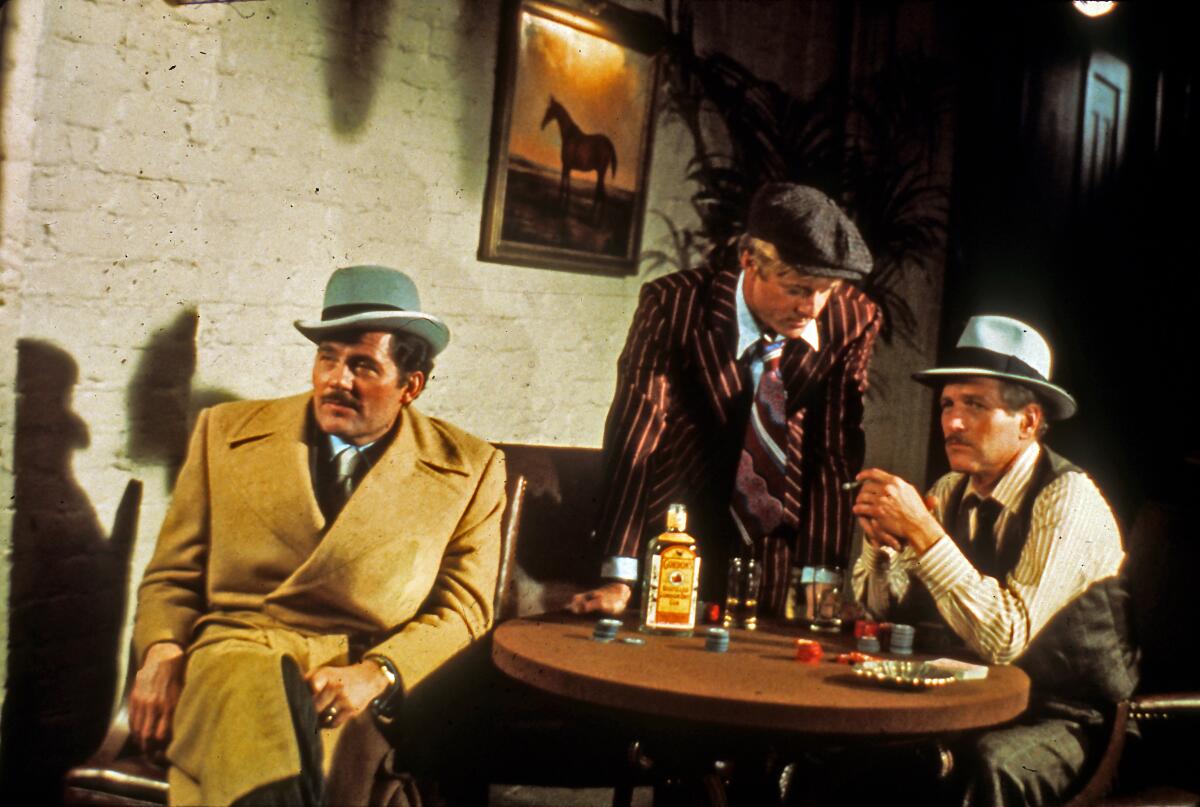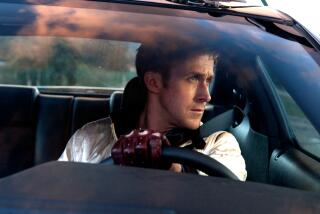From the Archives: ‘The Sting’ Reunites a winning combination

- Share via
It’s taken four years to reassemble “Butch Cassidy and the Sundance Kid’s” winning combination — Paul Newman, Robert Redford and director George Roy Hill — but it’s been worth the wait.
Their new film “The Sting” (Pacific’s Cinerama Dome), imaginatively written by 27-year-old former cinema student David S. Ward, is an unalloyed delight, the kind of pure entertainment film that’s all the more welcome for having become such a rarity. What’s more, it’s a triumph of quality Hollywood craftsmanship.
The time is September 1936, and the place is Juliette, Ill. Redford, an up-and-coming con man, and his small-time veteran partner (Robert Earl Jones) play the old switch game and find themselves a whopping $11,000 richer. What they don’t know is that their patsy is a numbers runner for a top New York racketeer (Robert Shaw).
Full of revenge
In short order Jones is bumped off and Redford, full of revenge, is on to Chicago to find Newman, a legendary big-time con man currently on the skids. Inevitably, they team up to “sting” Shaw, an ugly humorless Irishman who “don’t drink, don’t smoke, and don’t chase women.”
How they go about trying to take Shaw in a big con makes for some of the funniest, most outrageous, suspenseful and surprising moments seen on the screen this year. Furthermore, “The Sting” overflows with warmth and nostalgia, making it a fun holiday treat.
Newman, Redford and Shaw are in top form, and they are backed by a host of character actors typical of beloved 30s movies. Eileen Brennan is Newman’s lady, a good-hearted madam whose brothel is hidden over a merry-go-round. Key members on the Newman-Redford team are slick tricksters Ray Walston and Harold Gould and unassuming, loyal types like John Heffernan and Jack Kehoe. Representing the forces of law and order, more or less, are grim-visaged Charles Durning and no-nonsense Dana Elcar.
Charles Dierkop is a standout as Shaw’s chief bodyguard, a man who tries to ape his boss in every way. Other ladies are Dimitra Arliss as a sullen but seemingly kind waitress, Sally Kirkland as a breezy stripper who seems to enjoy her work, and Pauline Myers as Jones’ devoted wife.
“The Sting” boasts superb production design. It unfolds in chapters, and employees such vintage transitional devices as wipes and irises. Art director Henry Bumstead and costume designer Edith Head have recreated the period right down to the last detail. Marvin Hamlisch’s score is particularly adroit in establishing mood, incorporating as it does some poignant Scott Joplin piano rags.
60-Year Career
In truth, “The Sting,” which was eloquently photographed by Robert Surtees and edited with essential precision by William Reynolds, must’ve been a greater challenge for Hill than “Butch Cassidy.” That’s because Ward’s script is extremely complicated and highly verbal (and also calls for surprisingly minimal violence), yet not for a second does Hill allow the piece to lag. In “The Sting,” just about everybody gets cheated — except the audience.
More to Read
Only good movies
Get the Indie Focus newsletter, Mark Olsen's weekly guide to the world of cinema.
You may occasionally receive promotional content from the Los Angeles Times.








